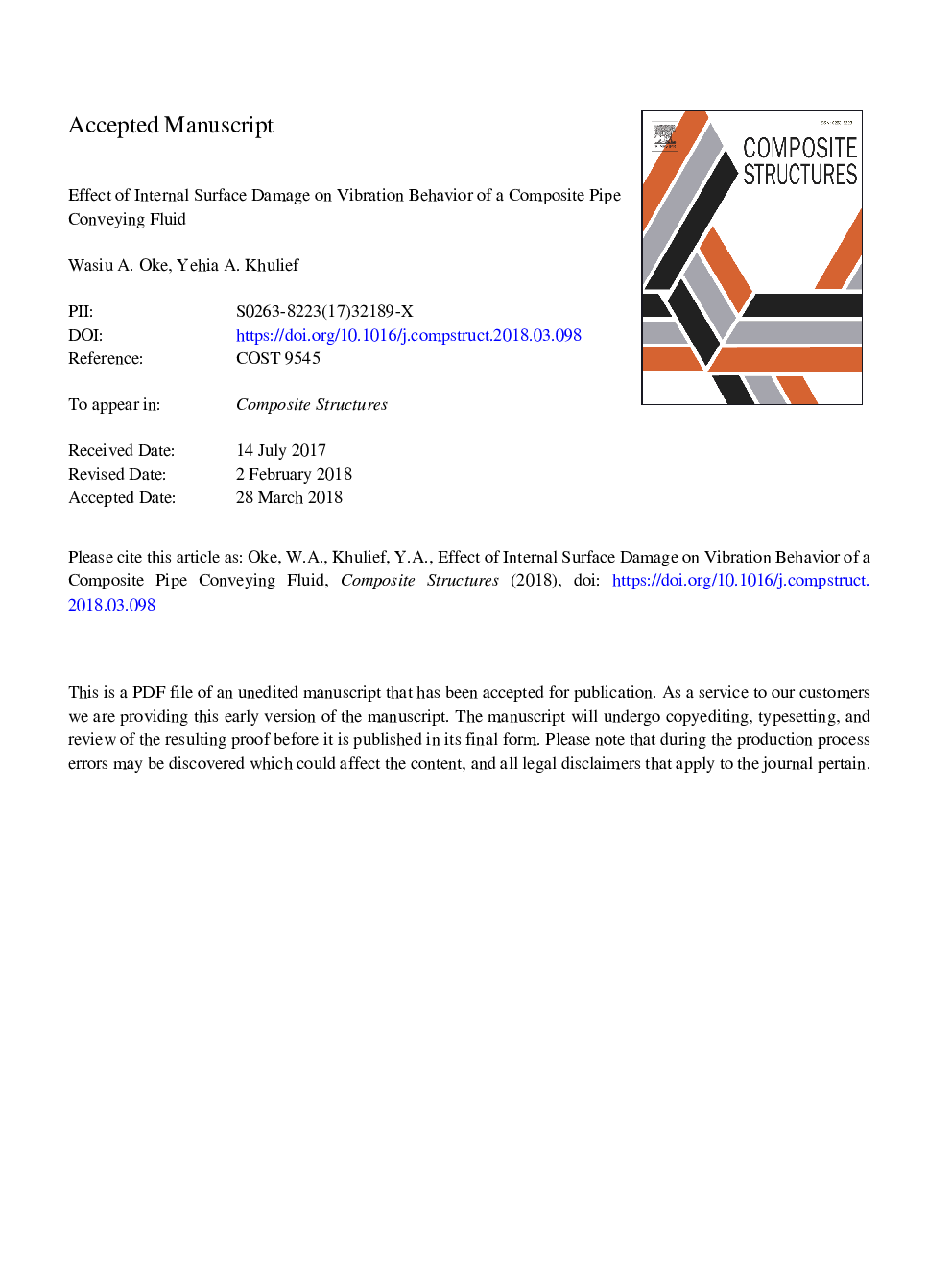| Article ID | Journal | Published Year | Pages | File Type |
|---|---|---|---|---|
| 6703461 | Composite Structures | 2018 | 29 Pages |
Abstract
Composite pipes have become a viable alternative to metallic pipes in several applications. Flow-accelerated erosion and internal surface attack often result in thickness thinning that may compromise the structural integrity of the pipe and lead to its failure. In this paper, we investigate how the internal surface damage is reflected on the vibration behavior of a composite pipe conveying fluid. The defected pipe-fluid system is modeled using the extended Hamilton's approach and discretized using the wavelet-based finite element method. The modal characteristics of the pipe vibrations have been obtained by solving the generalized eigenvalue problem. The developed model was validated and some benchmark solutions are presented to highlight the effects of the internal wall-thinning on the vibrational behavior of composite pipes conveying fluid. The obtained results facilitate the future research by revealing the potential of using the vibration signature as a basis for detection of erosion-induced internal defects in pipelines.
Related Topics
Physical Sciences and Engineering
Engineering
Civil and Structural Engineering
Authors
Wasiu A. Oke, Yehia A. Khulief,
